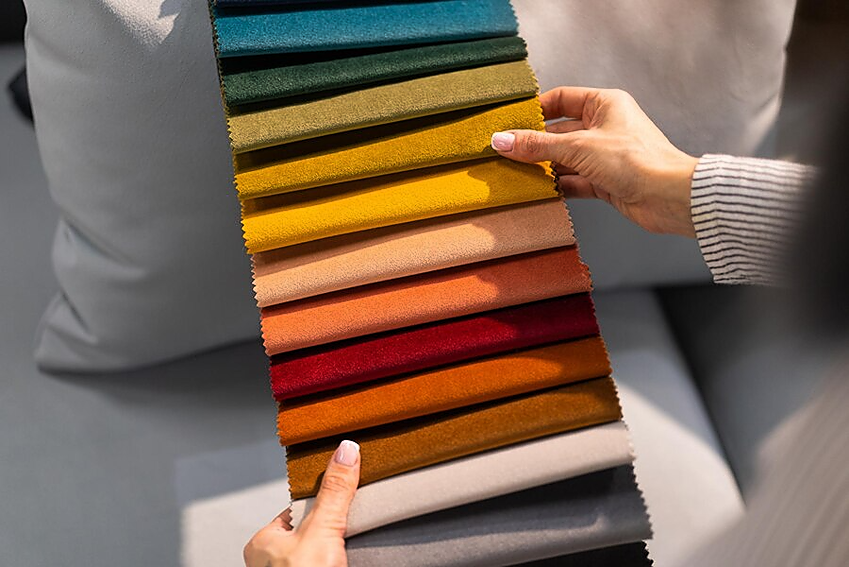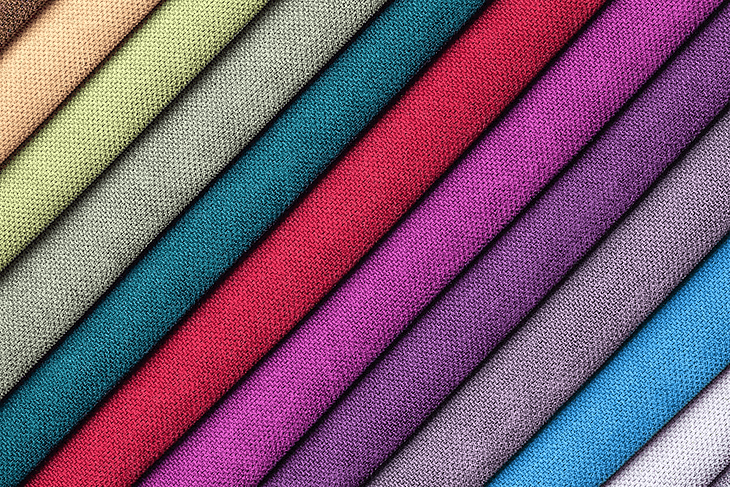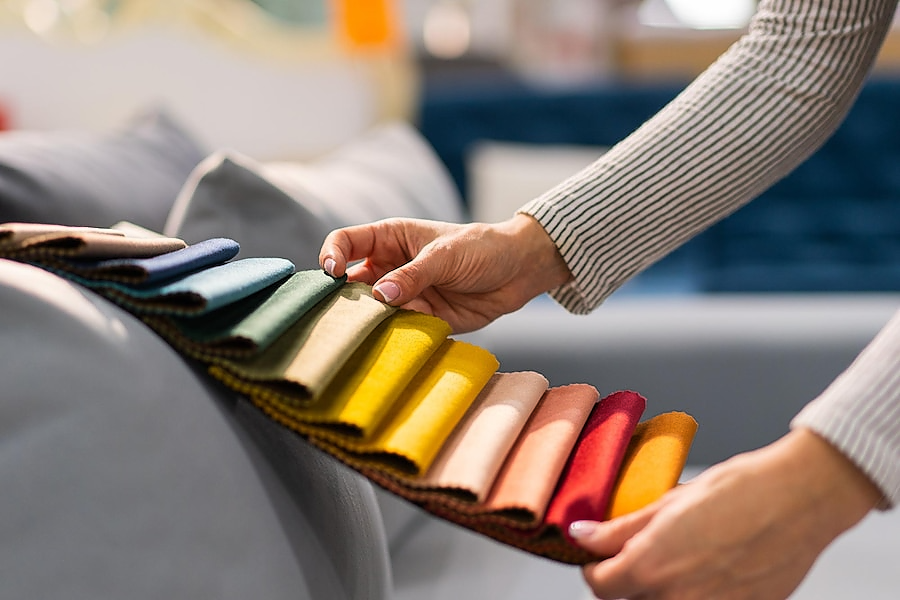It’s crucial to decide what kind of fabric you want before looking for how to start a t-shirt business. A soft cloth material must be located as well. Nobody wants to purchase a garment that is irritating and uncomfortable!
We’ll start by going through the various fabric types such as cotton and polyester fabrics and blend fabrics that suit the best. Finding the finest alternative for your sales and client satisfaction will be made easier with the help of this.
Cotton is a flexible fiber that may be knitted or woven into a wide variety of fabrics, including denim, flannel, jersey, and more. Of course, the feel and wear of each one vary significantly.

Cotton is a naturally fluffy and fuzzy plant, and cotton fabric keeps that soft feel.
Cotton can drain moisture away from the skin because of the space between its fibers, making cotton an absorbent material.
Cotton fabric is breathable due to the spaces between the fibers.
Strong and gets stronger when wet, cotton is a durable material. Cotton is ideal for fashion since it makes clothes endure longer, which is the key to any sustainable wardrobe.
When cotton is wet, it retains its strength, so you can trust the washing machine to perform its job without worrying about fading or wear and tear.
Cotton fibers absorb color well, making it simple to dye and print
Cotton does not conduct electricity, therefore you won’t experience static shocks like with some synthetic textiles.
A synthetic cloth called polyester is typically made from petroleum. One of the most widely used fabrics in the world, this material is utilized in a huge variety of commercial and non-commercial settings.

Enduring: Because polyester fibers are so tough, unlike cotton and other natural fabrics, they do not easily rip, stretch, or pill. Because of its durability, polyester clothing doesn’t need special maintenance and can easily withstand damage from machine washing. Polyester fabric is particularly well-liked for outdoor apparel due to its resilience.
It can withstand dampness: Polyester is a common material for outdoor clothes and equipment (like tents) because it resists liquid droplets, which means the fabric will drain away moisture rather than soak it up.
It maintains its form: Polyester textiles are less likely to wrinkle and will maintain their form, drape, and stiffness better than linen and cotton fabrics, which must be ironed.
It may be rough: The feel of polyester isn’t particularly luxurious, unlike that of many natural materials; But there are a variety of ways to make and weave polyester fabric, and these variations will have an impact on how coarse or smooth it is. China silk fabric, one of the different varieties of polyester, is virtually as silky as satin or natural silk.
The method of blending is used to create various yarns in the textile industry by combining multiple fibers with various origins. Blended fibers might come from many sources and have varying compositions, lengths, thicknesses, and colors.

Blending makes the fabric perform better. For instance, a cotton polyester blend fiber combination produces less creasing and better absorbency. Additionally, it enhances the fabric’s feel and texture.
Blending can occasionally bring down the price of the cloth. Wool, for instance, is a pricey fiber. But the price of the cloth is decreased when wool is combined with a less expensive polyester blend.
Cross-dye effects can also result from blending.
By making up for fiber variances, it also optimizes the raw material for spinning and finishing.
The durability of the product is also increased by mixing. A fabric’s lifetime is unquestionably increased when strong, resilient synthetic fibers are combined with delicate natural fibers like silk.

Determine the T-shirt specifications: Identifying the characteristics you want in t-shirt materials is the first step. This includes characteristics like softness, odor resistance, and breathability.
Select a printing strategy: It’s also critical to be aware of the printing technique you’re interested in. Direct-to-garment printing, screen printing, sublimation printing, and embroidery are examples of this.
Select an effective style: If the garment has a purpose, you will need to ascertain it. Do they relate to a certain occasion? They’ll be worn as a uniform, yes. Can it be purchased as a product? You can choose the fashion that best suits you with the aid of this.
Be aware of your market: As a last consideration, consider the type of wearer. Their age and sense of fashion are among these. You may choose the ideal t-shirt textiles for a particular individual and situation by being aware of these characteristics.